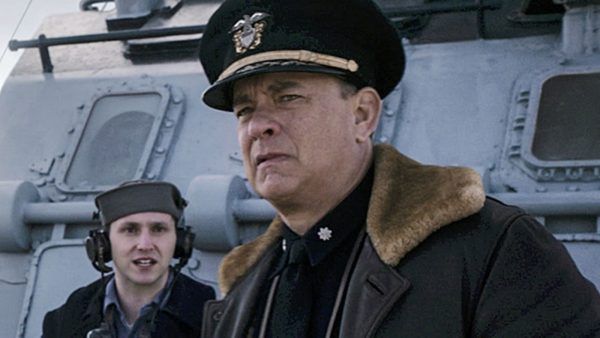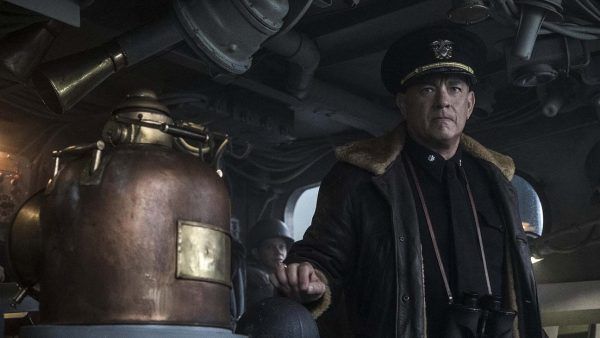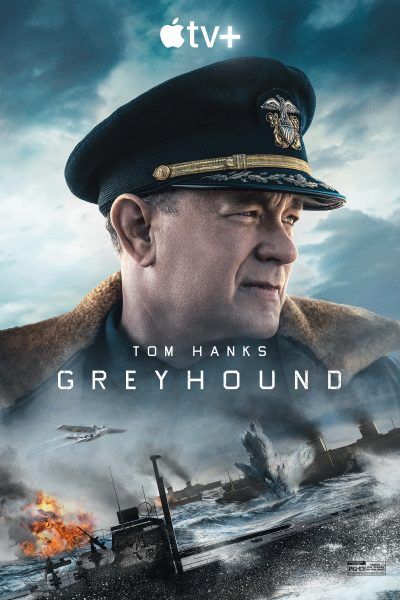Every dad in America should get to see Greyhound for free. It is your right as dads to see a movie that doesn’t really have a plot or characters but is an incredibly well-made tribute to World War II naval warfare starring America’s Dad, Tom Hanks. Some might argue that Greyhound is too thin to warrant consideration, but I would counter that it hits the sweet spot of what it’s going for, which is to put you in the middle of a tense standoff as a Fletcher-class destroyer attempts to protect a group of supply ships as they make their way across the North Atlantic. That’s the entire movie, but director Aaron Schneider knows how to keep the film tense and immediate with the benefit of Hanks’ meticulously researched screenplay. The action always feels real to where Greyhound demands the audience’s full attention so that you can keep up despite failing to understand the lingo and workings of a warship. It’s not a movie for everyone, but those who enjoy these brass-tacks reenactments of World War II combat will love what Greyhoundaccomplishes.
The story begins in February 1942 in the North Atlantic. Commander Ernest Krause (Hanks) is the captain of Fletcher-class destroyer Greyhound, and his duty is to protect a fleet of vulnerable supply ships carrying supplies in the middle of the Atlantic. The ships are vulnerable to attack from German U-boats, and during a span of 50 hours, the fleet does not have air cover, so the only support comes from ships like Greyhound. With minimal introduction, we get straight to the action as Greyhound must fend off U-boats while also trying to rescue other ships. Krause, a religious man, feels the weight of all his actions whether it’s killing enemy soldiers or making choices about how his boat should assist other ships. Like a shepherd protecting his flock, Greyhound must work to protect as many ships as possible during their dangerous voyage.
What’s surprising about Greyhound is how little interest it has in the individual stories of its crew. The movie has a begrudging prologue that takes place shortly after Pearl Harbor where Krause tells the woman he loves (Elisabeth Shue) that he’s going off to war, and that’s really the last we see of their relationship. It’s not that Greyhounddevalues human life as much as it’s really about the whole crew and Hanks consciously avoiding making this a hero story even though he’s once again playing a captain trying to protect people. But whereas Captain Phillips was more about the conflict between individual characters, Greyhound is about combat between ships. For some, that may not be particularly interesting, but Schneider had my rapt attention going through the mechanics of these sailors trying to survive at sea.
Hanks also wisely put himself in the lead of this one even though on paper, Krause is a pretty thin character. We know there’s a woman he loves and that he’s a religious man, but there’s no monologue a la Saving Private Ryan that explains who he is and where he comes from. One of Hanks’ strengths is playing the everyman, and that serves him well here, but he also conveys a moral strength, which is essential for this story. Krause is the center of the movie, and while we can admire his cool resolve and quick thinking, what stays with us is the moral weight that Hanks gives the performance. While the crew cheers at the sinking of a German U-boat, the Christian Krause doesn’t see “50 krauts gone!” as a crewmember exclaims. “50 souls gone,” Krause says quietly to himself.
You need those small character moments in a movie that’s comprised almost entirely of naval warfare. Some may feel like that’s too much naval warfare, but Schneider and Hanks had a clear vision on the movie they wanted to make, and that movie is ships fighting other ships. If that doesn’t sound like the movie for you, that’s okay, there are lots of other movies in the world. For me, I was totally on board because I love the nitty-gritty detail of how these ships operated. Greyhound had me completely absorbed and the only time that reality was shattered was when they get the occasional radio message from a German sub officer speaking English to taunt them. Even if something like that really happened (and given the amount of research that clearly went into the rest of the movie, I’m inclined to believe that it did), we don’t really need to hear Nazi trolling (there’s enough of that on the Internet).
Some viewers may want more meat on the bones of Greyhound. They may care about the personal lives of the crewmembers and need that entry point to be invested in their story. I get that, but for me, Greyhound is a thrilling and captivating ride that brings a fresh perspective to a World War II story that feels like it could use some more attention. Schneider and Hanks wanted to put the viewer in the middle of the action, and they accomplished exactly that with their straightforward, unvarnished military drama.
Rating: B




